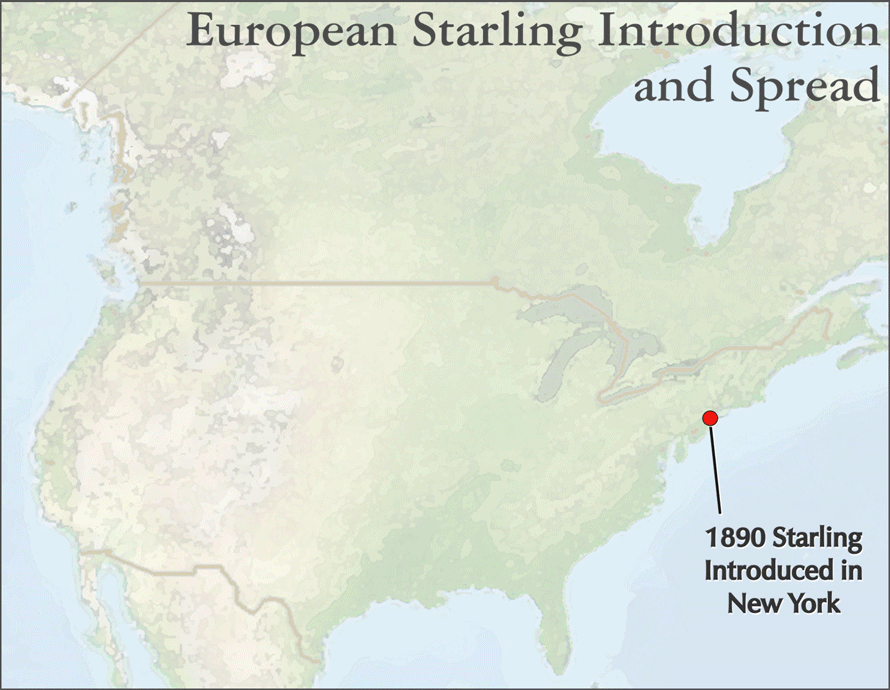European Starling
The European starling is an example of a non-native creature introduced to the U.S. that established itself and spread quickly and broadly across the country, with extensive impacts on local biota and economies.
Starlings were first brought to this country with an 1890 release in New York City. They moved out quickly, and were found as far south as Amelia Island, Florida by 1918, as far north as Brockville, Ontario, by 1919, and had even reached the Pacific by 1950. Texans first recorded seeing them in Dallas in 1935, in Harlingen by 1936, Austin in 1937 and El Paso by 1947.
Starlings are now believed to number over 200 million in the U.S., a third of their global population, and in league with such common American birds as the red-winged blackbird. As aggressive and parasitic nesters, the starling’s expansion has come at the expense of native cavity-nesters such as the great-crested flycatcher, wood duck, and kestrel. Starlings’ great numbers and prodigious appetites have also led to concern over their agricultural impacts, for eating feedlot grain, potatoes, peaches, strawberries, figs and other fruits.
Selected references:
Cooke, May Thacher. 1928. The Spread of the European Starling in North America (to 1928). Circular No. 40, U.S. Department of Agriculture. Washington, D.C.
Jung, Clarence. 1945. “A History of the Starling in the U.S.”, Barger, N.R., Ed., in The Passenger Pigeon, Vol. VII, No. 4. Wisconsin Society for Ornithology.

